Wide format woes – how to get the most from your machine
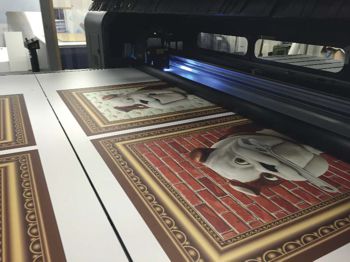
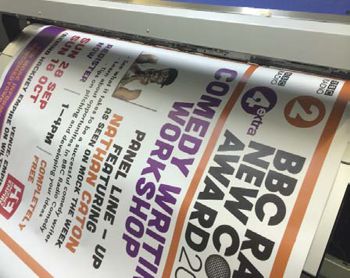
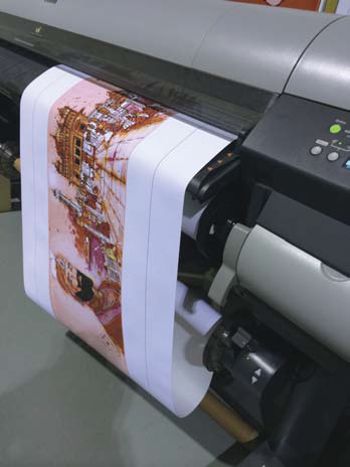
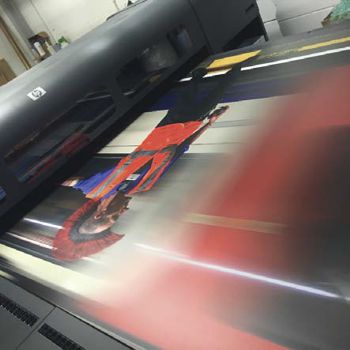
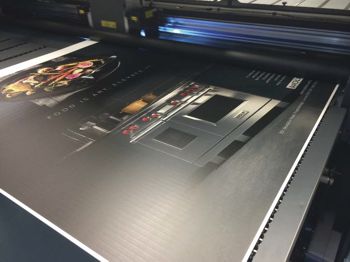
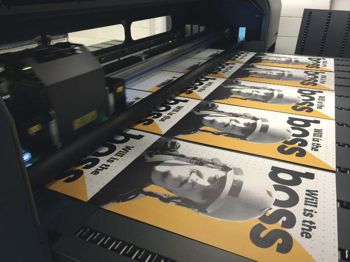
Family-run print company Group101 have a number of wide format machines working throughout their Essex premises.
Founder and Director of Group101 James Sahota has had a great deal of experience with successful print jobs – but not without a few pain points along the way. Here, he talks about some of the most common issues the team has encountered throughout their years in business, along with how to avoid them cropping up in the future.
Woe: Managing colour reproduction expectations
Fix: Educating clients on how to submit art files
One of the biggest things for us this year has been educating clients about colour reproduction, and about how files are reproduced through wide format.
Red has been a problematic colour in the past, and so has yellow, and this can often be because people are preparing files on an RBG (red, green and blue) monitor. They’re expecting the colour to print as they see it there, but of course, we’ll be printing on a CMYK printer. We’ve spent a great deal of time educating our clients, whether it’s a creative agency or one-man band submitting the file. I would say that nine times out of 10 there’s an issue with an artwork file coming into us, so we are working with clients to show them how to reference against a CMYK colour.
For a massive print run, we’ll still send an old-school wet proof to a client so they understand how it will look, and we’re finding that some of the larger agencies especially are starting to understand.
Woe: Bulbs expiring/breaking
Fix: Regular maintenance
Our UV machines will be used for jobs that clients want next day, as the ink is curing straight away and there’s no outgassing time. We find this to be great for clients in the exhibition sector because they normally want things last-minute, or within a couple of hours.
However, we need to provide these machines with regular maintenance, or these last-minute jobs can be jeopardized. We once had a machine on which the UV bulbs decided to expire on us in the middle of a rush job at 2am in the morning, and no one in-house can fix that problem. Although some machines have really good pros, when they go down, they go down in a big way.
We have machines that are still going after four or five years; manufacturers often say you should be looking at changing them after three, but I think it’s all down to maintenance. At Group101 we clean regularly, monitor when things are coming up to be cleaned and replaced, and we never use any third-party inks.
Woe: Short printer shelf life
Fix: TLC
We recommend regular cleaning, using recommended inks, and not skipping any steps when it comes to taking care of your machine.
We have found in the past that a lot of people don’t want to read the manual and go through all the steps, but I’ve personally found that it works in our favour, because it really does prolong the life of your machine. It reduces things like repair times, for one; some of the HP Designjets we’ve got, we’re so familiar with these machines now, we can order the right part in and have the machine fixed and up and running ourselves.
Keeping track of what is needed in terms of maintenance is important. The HP UV flat bed we’ve got has an hourly timer countdown, so we know when certain things need changing. It will give a warning, say for example, when we’re approaching four hours until we need to service the machine. Other machines don’t tell you how long a particular part will last or when the next maintenance is due, which can be slightly trickier, so you really have to be on top of it. The results are worth it though - we’ve had Roland machines here that have been going for seven or eight years and have never needed a head replacement, which is sort of unheard of. Machines do have a life cycle, but you can prolong that life cycle by going the extra mile.
Woe: Software issues
Fix: Upgrade to a newer software/machine
I think in the earlier days of software releases, we would have issues of files not going through to the RIP, or going through slowly.
Back in the day, we spent many hours pulling our hair out, but RIP software for these machines today is so solid, they don’t really struggle with any files. It seems like the design guys who have made things like (Adobe) Illustrator and Photoshop have really taken into consideration the print manufacturing side of things now too, which helps.
Woe: Issues with speciality inks
Fix: Use them regularly
We definitely encountered a teething period when we first started using speciality metallic and white inks.
Now, we have it down to a tee. The thing with whites and metallics is, although you may have heard it said you can let them sit for a while, you really can’t. You’ve got to shake them and just print something every so often so that they don’t give you any issues when it comes to using them in a job. Otherwise the ink can go milky and metallic particles can just sit at the bottom of the ink cartridge. You just need to be a bit more considerate and pay close attention to what the manufacturers are saying, because if you don’t, yes these inks will give you issues.
Any final advice?
My advice for anyone looking to get into wide format is, firstly, don’t go for the first machine that a manufacturer shows you. You need to do your own homework and find out how the machine is going to be used in your environment. Take your own files into demo days, go and see a manufacturer and print your files yourself, get around the country and see the different suppliers and see how one machine compares to another.
My other piece of advice would be to stay on top of the maintenance. You find the problems start occurring when you neglect these machines. It may seem like a waste of time at the time to do a fifteen-task list, but what you’ll find is it’ll save you a lot of money in the long run and prolong the life of your machine.
